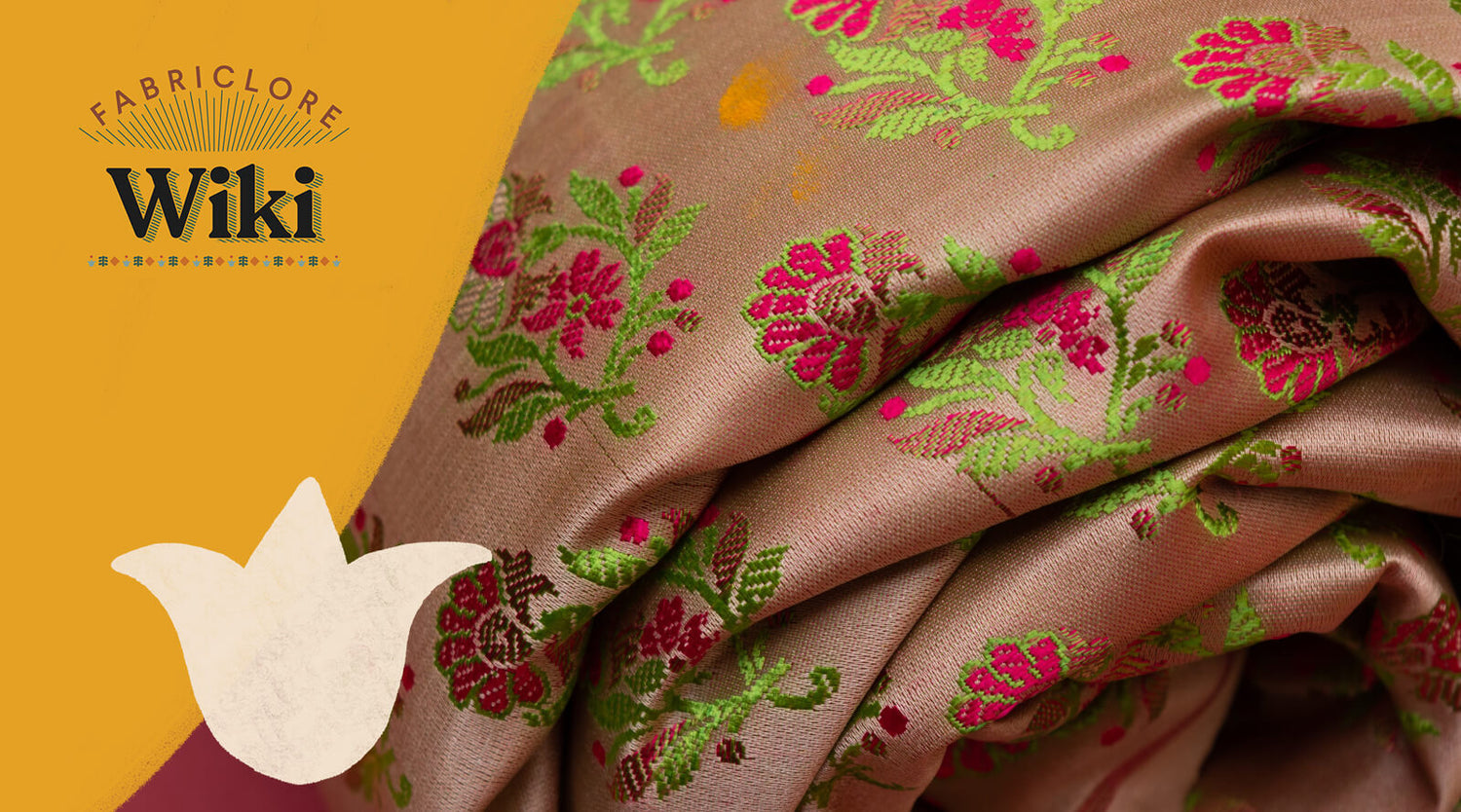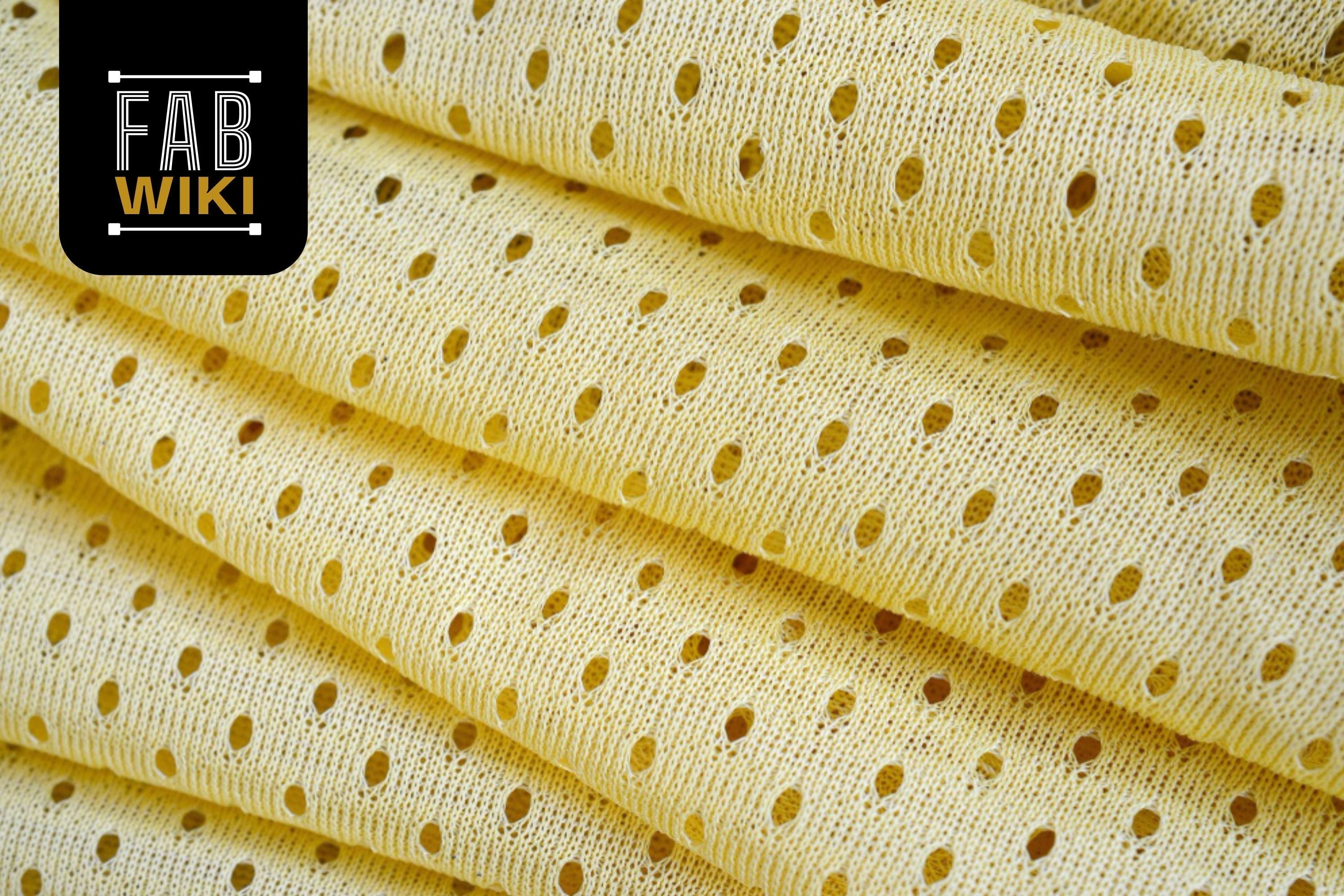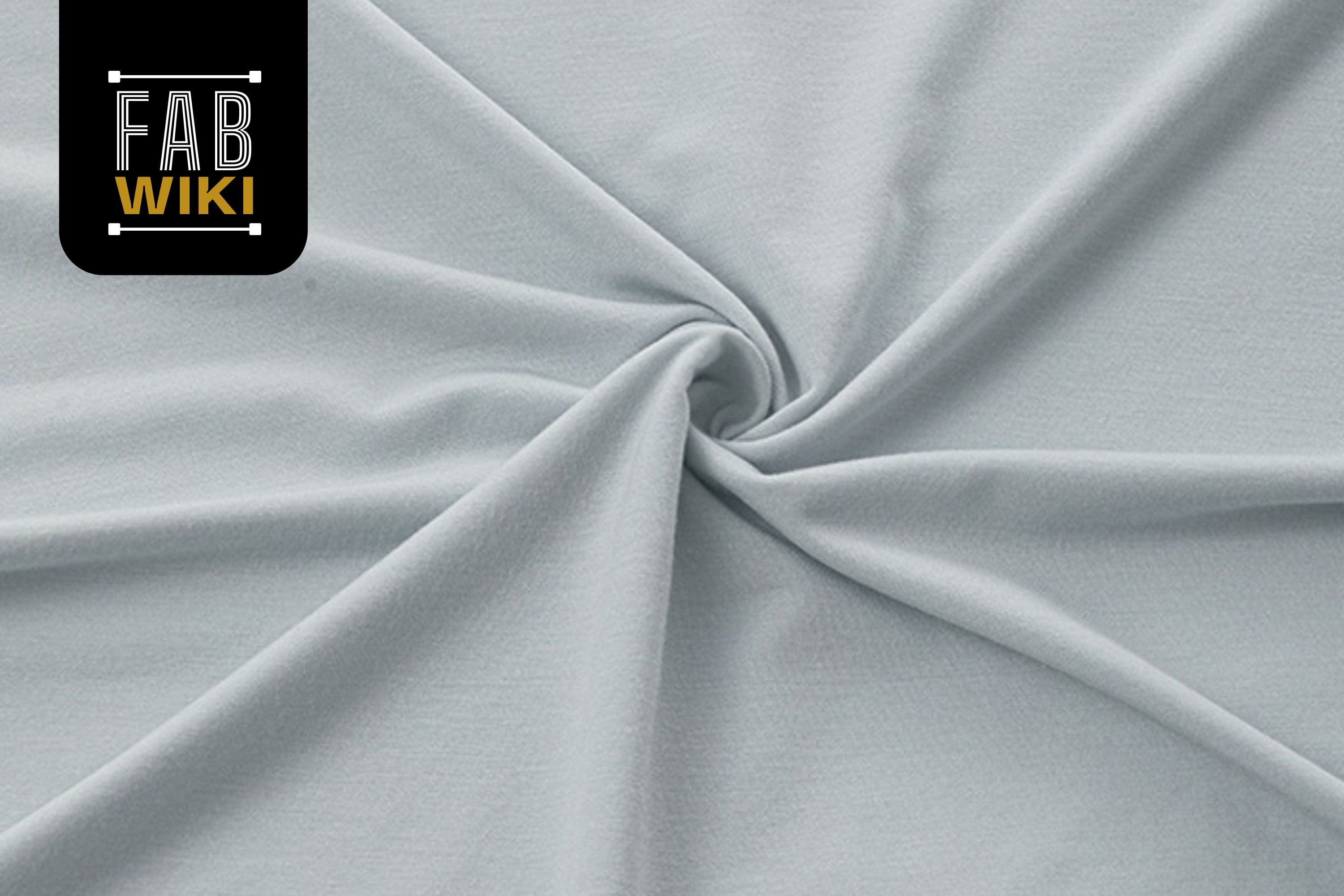Introduction to Satin Fabric
- Satin is a smooth, shiny fabric that looks stylish.
- It's made by weaving fibers like silk, polyester, acetate or nylon so the threads lie flat and reflect light, creating a shiny finish.
- Satin was once made from expensive silk and worn by royalty, but now it's more affordable with synthetic fibers.
- It's used in clothing like evening gowns and bridal dresses, as well as home decor and accessories.
- Satin feels luxurious and holds bright colors well.
- Satin adds a touch of sophistication and elegance to anything it's used for.
What is Satin Fabric?

- Along with twill and plain weaves, satin is distinguished as one of the major weaves within the textile.
- It creates fabrics that are smooth, soft, and lustrous.
- One side of the satin fabric has a dull texture and the other has a shiny surface.
- Satin fabric is created with a distinct weave by using fibers like silk, viscose or nylon.
History of Satin Fabric

- Satin fabric dates back to medieval China, where it was made with silk.
- The weave was developed in Quanzhou, China and was named Zaitun.
- Both fabrics and weaves were passed through the Silk Road and became widely produced fabrics in the Middle East.
- In the 12th century, Italy became the first country to produce satin. Whereas, in Europe, satin became popular during the 14th century.
Types of Satin Fabric:
|
Antique Satin |
This type of satin applies uneven yarn as the threads are woven either in 5 harnesses or eight harnesses. |
|
Baronet Satin |
It uses rayon warp and cotton weft threads and is extremely shiny. |
|
Charmeuse |
The name has been derived from the French word “Charmer”. The Charmeuse is lightweight and consists of characteristics similar to satin, that is, a shiny front with a dull back. |
|
Crepe Back Satin |
This type of satin is reversible; one side is shiny and the other comprises a crepe texture. |
|
Duchess Satin |
Duchess satin has more weight than any other type of satin fabric. It is stiff and is not lustrous. |
What Makes Satin Fabric Stand Out
|
Lustrous |
Due to its weaving pattern, satin has a shiny front side. |
|
Soft |
Satin is soft due to the arrangement of weft as well as warp threads. |
|
Durable |
Satin uses filament fibers which are woven tightly making fabric stronger. |
|
Wrinkle-resistant |
Satin has the property that it does not get wrinkled easily in comparison to other fabrics like rayon and silk. |
|
Hypoallergenic |
Satin is made from pure silk which, results in 100 percent natural along with hypo-allergic properties. |
Modern Innovations in Satin Fabric:

|
Innovation |
Description |
|
Eco-Friendly and Sustainable Manufacturing |
Use of organic fibers and recycled fibers to reduce environmental impact. |
|
Stretch Satin |
Satin blended with stretch fabrics, offering more comfort and a flattering fit, used in dresses and performance wear. |
|
Advanced Dyeing Techniques |
Techniques like digital printing enable rich, vibrant colors and intricate designs while reducing waste. |
|
Innovations in Fiber Blends |
Blends with cotton, wool, nylon, etc., improve durability, breathability and overall feel, expanding satin's use in both casual and formal wear. |
How to Judge the Authenticity of Satin Fabric:
|
Method |
What to Look For |
|
Feel the Texture |
Silk satin feels smooth and cool, while synthetic satin may feel stiff or rough. |
|
Check the Shine |
Real satin has a soft, glowing shine. Silk satin glows naturally, while synthetics may look too shiny. |
|
Burn Test |
Burn a small piece of the fabric: Silk turns to ash, Polyester melts, Nylon melts and leaves hard pieces and Acetate burns quickly. |
|
Look at the Drape |
Silk satin falls gracefully and feels heavy, while synthetic satin may not drape as well and feels lighter. |
|
Check Fiber Labels |
Check for fiber content labels. Terms like "100% silk satin" indicate authentic silk, while polyester or acetate are synthetic alternatives. |
Advantages of Satin Fabric
- Satin fabric is popular because it looks shiny and feels smooth.
- Its shiny finish makes it perfect for special events, like evening gowns or lingerie.
- Satin is very flexible and suitable for both fancy and casual occasions.
- It's soft and comfortable on the skin and works well in any weather because it's light and breathable.
- Satin takes dye well, so it comes in bright, lasting colors, making it a favorite for designers.
Disadvantages of Satin Fabric
- It wrinkles easily, primarily if not handled carefully, requiring regular steaming or ironing to stay smooth.
- Satin is slippery, making it tricky to sew, especially for beginners. It may shift while cutting or sewing, so special techniques are needed.
- Satin, mainly silk satin, can be delicate and gets damaged easily from rough surfaces or spills, requiring careful cleaning and handling.
- Satin, especially silk satin, can be expensive, making it a luxury fabric not always affordable for everyday wear.
Sustainability and Environmental Impact of Satin Fabric
- Satin looks shiny and fancy, but making it can harm the environment.
- Synthetic satin, like polyester and acetate, uses chemicals from oil, wastes a lot of water and pollutes the air.
- Acetate, made from wood, also uses harmful chemicals.
- Silk satin is natural but imperfect, as silkworms are killed to make it and farming uses chemicals and water that hurt the planet.
- New dyeing methods that use less water or natural dyes are also helping.
- Some people are using plants like bamboo or hemp to make satin in a more eco-friendly way.
- There is also "peace silk," which doesn’t harm the silkworms and is better for the planet.
How to Wash and Care for Satin Fabric:

Washing Tips:
- To keep satin shiny, wash it by hand or dry clean it.
- If you wash it by hand, use lukewarm water and mild soap and avoid twisting or wringing it.
- If the label says "dry clean only," it’s best to follow that to keep it looking good.
Care Tips:
- Satin wrinkles easily, so avoid using high heat when ironing.
- Use low heat or steam to remove wrinkles.
- Always iron on the back side or place a cloth between the iron and satin.
The Role of Satin Fabric in Fashion and Design:
|
Aspect |
How Satin is Used in Fashion |
|
Luxury Fashion |
Satin is common in eveningwear and bridal gowns, enhancing glamour with its shiny, smooth look. It’s used in couture collections for a sophisticated and elegant appearance. |
|
Satin in Street Fashion |
Satin has become popular in casual wear like slip dresses, bomber jackets and skirts, adding a touch of luxury to everyday outfits. |
|
Satin in Accessories |
Satin is used in accessories like scarves, handbags and shoes, giving them a chic, polished look that makes them stand out. |
Common Applications and Uses of Satin Fabric:
|
Application |
How Satin is Used |
|
Eveningwear |
Satin is used in evening gowns, dresses and skirts, adding elegance and catching the light for a sophisticated look. |
|
Bridal Fashion |
Satin is a popular choice for wedding gowns, veils and accessories, creating a timeless and refined appearance. |
|
Home Textiles |
Satin is used for cushions, bed linens and curtains, adding luxury and elegance to home decor. |
|
Accessories |
Satin is used in scarves, hats, gloves and bags, providing a lustrous finish that enhances any outfit. |
Manufacturing Process of Satin Fabric:

|
Step |
Description |
|
Weaving Technique |
Satin is woven with a special satin weave that creates a smooth, shiny surface, reflecting light for its glossy finish. |
|
Dyeing Satin Fabrics |
Satin is dyed using methods like solution dyeing or piece dyeing to achieve rich, vibrant colors while maintaining its shine. |
|
Finishing Methods |
After weaving and dyeing, techniques like heat setting and pressing enhance the fabric’s shine, smoothness and durability. |
Satin vs. Silk: Understanding the Difference:
|
Aspect |
Satin (from Synthetic Fibers) |
Silk Satin |
|
Definition |
Satin refers to the weaving technique that creates shine. |
Silk is a natural fiber from silkworms. |
|
Material |
Made from synthetic fibers like polyester or acetate. |
Made from natural silk fibers. |
|
Cost |
More affordable. |
More expensive. |
|
Maintenance |
Easier to care for, resistant to wrinkles and stains. |
Requires delicate care, often dry cleaning. |
|
Texture |
Less luxurious texture compared to silk. |
Luxurious, soft, and smooth texture. |
|
Shine |
Has shine, but is less natural and deep compared to silk. |
Unmatched, natural, and rich shine. |
|
Durability |
More durable and resistant to wear. |
More delicate, and may require careful handling. |
|
Availability |
Available in a wider range of colors and finishes. |
Limited in color range but offers superior quality. |
Conclusion

Satin fabric is popular for its shiny look and soft feel. It can be made from silk or other materials and is used in many things, like clothing and home decor. Satin makes items look elegant and special. Although it needs extra care and can impact the environment, new methods are making satin more eco friendly. Satin is used in everything from dresses to casual wear and home items. Understanding how to take care of satin helps you make the best choice when using it in your designs or wardrobe.
FAQs
What kind of fabric is satin?
Satin isn’t a type of fabric but a way the fabric is made. It’s shiny on one side and matte on the other. Satin can be made from silk, polyester, nylon or acetate. It's smooth and shiny, often used for clothes and accessories.
What is the difference between silk and satin?
Silk fabric is a natural material from silkworms, while satin is a type of weave. Satin can be made from silk or synthetic materials like polyester. Silk satin is soft, breathable and more expensive, while polyester satin is cheaper, durable and easier to care for. Silk has a natural shine but synthetic satin is shiny too.
Is satin fabric for summer or winter?
Satin can work for both summer and winter. Silk satin is light and breathable, good for summer. Polyester satin keeps heat, making it better for winter. Thicker satin works well for cooler weather and lighter satin is better for warm weather.
Can you sew satin on a sewing machine?
Yes, you can sew satin on a sewing machine, but it can be tricky because it slides around. Use a small needle (size 9 or 11) and a walking foot to keep it in place. Use fine thread and short stitches for smooth seams. Pin or baste the fabric first to avoid puckering and practice on a scrap piece first.
What kind of satin is best for pillowcases?
Silk satin or good quality polyester satin is best for pillowcases. Silk satin is soft, breathable and good for your skin and hair. Polyester satin is more affordable but still smooth and shiny. Look for satin with a high thread count for comfort and durability.




